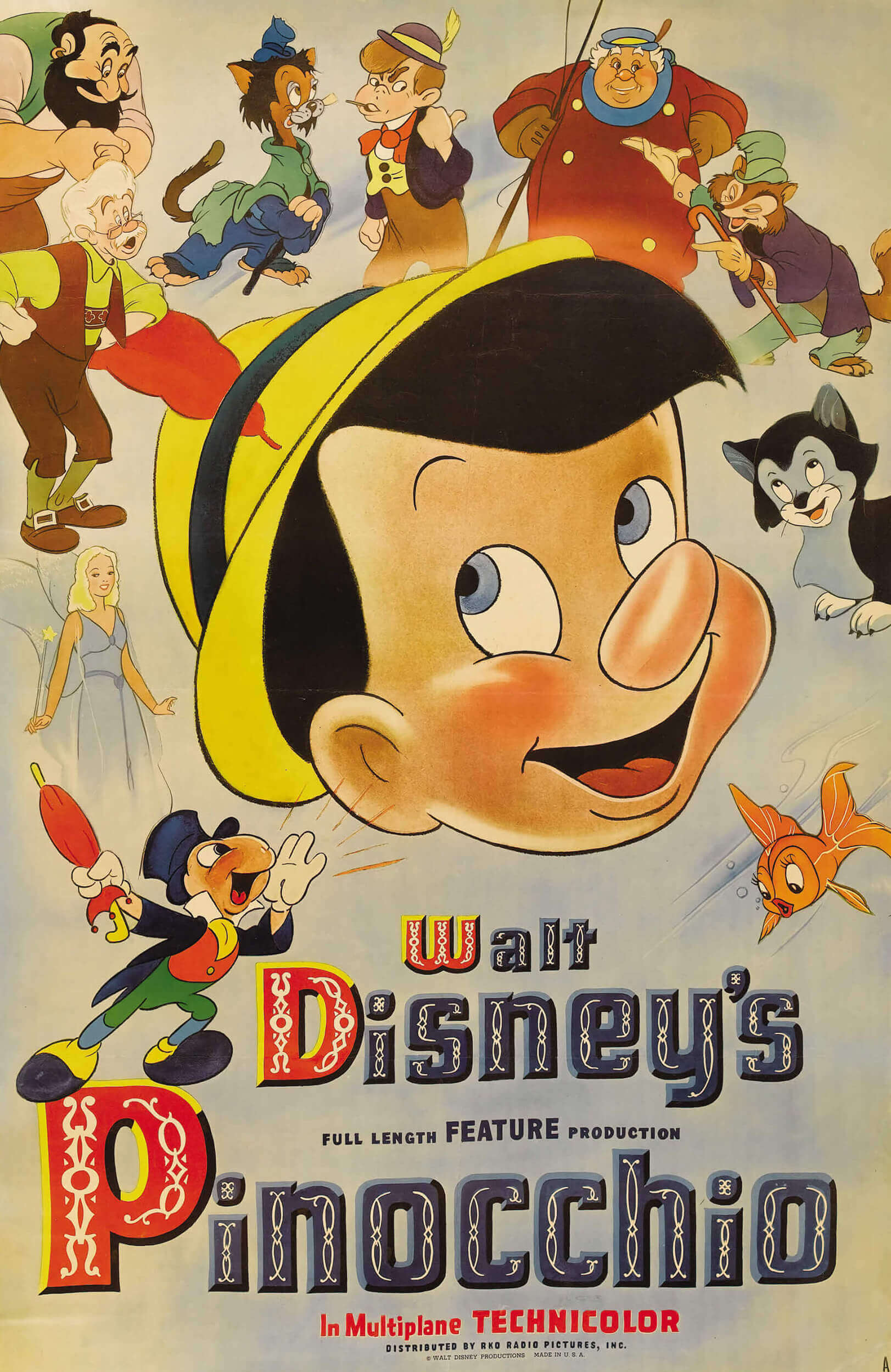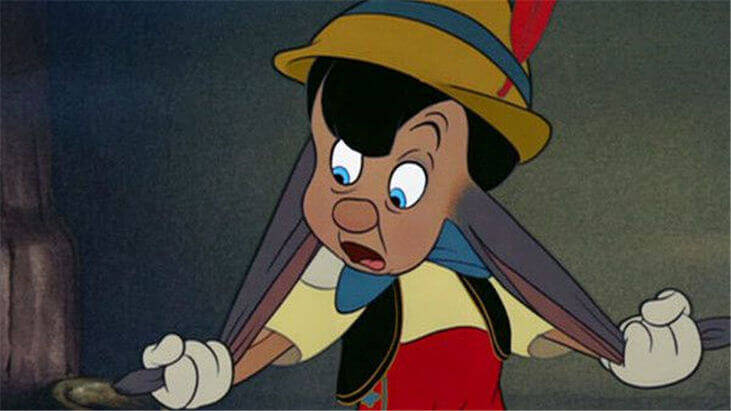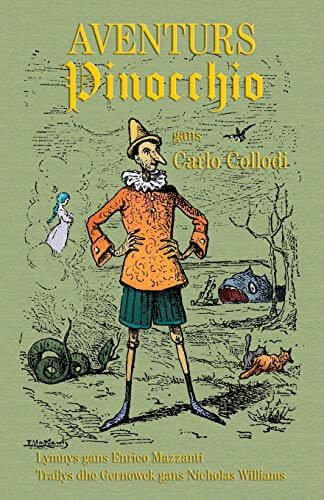Pinocchio’s Diamond Anniversary: 80 Years of a Classic Animated Masterpiece

After Walt Disney and his team of animators unveiled their first foray into feature length productions with Snow White and the Seven Dwarfs in 1937, audiences everywhere were spellbound by it’s gorgeous animation, beautiful songs and it’s captivating storytelling. With successful box office earnings and Disney’s company getting a nomination for an Academy Award (in the best music category), everyone was eager to see what could follow after the first princesses’ happy ever after.
Pinocchio would become Walt Disney Studio’s second feature length film and yet, it proved to become one of the most challenging and accomplished films that they have ever created. To mark the film’s eightieth anniversary, we explore the history of the talented team behind it and how Pinocchio is still as relevant today as it was on the silver screen all those years ago.
Based on the 1883 Italian children’s book The Adventures of Pinocchio by Carlo Collodi, Walt Disney decided to adapt the story and turn it into the studio’s second feature. Bambi was originally planned to follow the success of Snow White, but due to the difficulty of animating the animal characters in a realistic approach, the team decided to push it back and instead bring Pinocchio forward.
The narrative and characters went through a lot of changes from the source material to the final draft of the screenplay. The protagonist was originally a despicable and horrible puppet who mistreated his creator Gepetto, killed a cricket who tried to warn him of his bad behaviour, and was hanged by a fox and a cat. While a team of writers made a lot of changes to make their version more appealing and enjoyable for American audiences, they kept the initial concept of a puppet who comes to life and explores the world around him while learning how bad behaviour can affect children.
As the story went through its changes, the characters were going through various designs and were focused on so much that the production was halted. While the characters went through their fair share of re-designs, Pinocchio went through the most changes as the story was being edited to make him more likable, relatable and appealing for an American audience. As well as changing his appearance to reflect the more positive attitudes, his design was changed to make him appear more human and less like an actual puppet and reflect on his character’s journey of wanting to become a real boy.
Once the character designs were finalised and the story was satisfying enough for Walt Disney to move ahead and resume production, the film would set the bar for animation and technology within motion pictures and some of the techniques they used are still around to this day. Rotoscoping was used with some of the actors in costumes for the camera crew to capture their movements and the animators could reference. This was also used with miniature models to create the same effect with moveable objects like wagons and carriages.
The camera crew created and used a multiplane camera approach to create huge zooming and panning shots and is famously used in the introduction to the town that Gepetto resides in. The multiplane camera would give depth to the backgrounds and make it feel as if audiences were going through the scenes. Big pieces of glass with an element of the background was painted onto it and as the camera itself was tracking forwards it would create a fantastical effect of going through the foreground and background and give depth to the layers.
The efforts that every department at Walt Disney Studio put into the production of Pinocchio for nearly a four year commitment, building upon what they established with Snow White. But when the film was finally ready for a 1940 release, the studio was in for some shocking surprises!
The film was completed and ready for distribution in cinemas across America and the rest of the world, but unfortunately, the film was released during the Second World War. With the European film market dramatically affected from the war efforts, it was only dubbed into Portuguese and Spanish.
It may have fared better in America, but it didn’t live up to expectations after Snow White’s incredible box office returns. It’s uncertain why the film didn’t make as much profit for Walt Disney Studios as the film was positively received by critics, and audiences should have been more aware of the studio after their feature length debut three years prior. The combined domestic and international box office takings only made half of the film’s budget (which was itself estimated to be around $2.5 million in total).

This must have felt absolutely devastating to Walt Disney and all the cast and crew who put their blood, sweat and tears into this beautifully crafted feature. But while this might have been a blow to them all, it did become the first animated film to take home an Academy Award at the 1941 ceremony.
Pinocchio won two Academy Awards, one for best original score from Leigh Harline, Paul J. Smith and Ned Washington and the second was for best original song from Ned Washington and Leigh Harline for ‘When You Wish Upon a Star’.
Pinocchio was re-released multiple times in the cinemas over the next forty years and would be introduced on numerous occasions to new generations of audiences as well as existing fans of the film.
In the mid-eighties, the studio were investing in the home entertainment market and released a range of video cassettes with some of their films making their way to people’s homes. This was titled the Walt Disney Classics range and the first film to premier these new line of products was their anthropomorphic take on the Robin Hood tale in December of 1984. Pinocchio followed in pursuit with a summer release date the following year (16th July 1985) in VHS and Beta tapes for $79.95 for video rental services and dealers.

Much like the theatrical re-releases, the film also enjoyed success with the new formats for the evolving home market place. As well as having new editions to mark the film’s anniversaries on DVD and Blu-Ray, the film is now enjoyed across most of the world with the new streaming service Disney Plus. While the UK will have to wait a bit longer, it’s not long until customers can enjoy the film anytime in the comfort of their own homes (24th March 2020).
After eighty years since the film was premiered to the world, it is still regarded as one of the best animated films of all time. The characters are still instantly recognisable, the music still strikes an emotional chord with audiences and the animation techniques that Disney and his team helped to create is still used for today’s animated films.
But with Disney remaking this classic title as another live action film, we might see some changes in response to some scenes that would defiantly not be made today due to either stepping over the line of comfortable viewing or changes to censorship since 1940. We wouldn’t see Pinocchio smoking and drinking alongside Lampwick and a gang of boys at Pleasure Island; we probably won’t see the boys of said island transform into donkeys and sold in such a dramatically grim and painful portrayal; and we will surely see a more playful approach to an already dark concept of imprisonment and dismemberment threats from Pinocchio being in Stromboli’s puppet show. While these scenes have never been edited or altered for the numerous theatrical and home re-releases, the reaction from fans over the years have been enough for a warning added to the original film for Disney Plus.

But regardless of the criticisms of its bleak tones or the obstacles it overcame within the animation industry, Walt Disney’s Pinocchio should be celebrated for its achievement in storytelling, animation and exploring themes that not many people would dare to approach and come through on the other side.
Whether you have a copy of it on your shelf ready to be dusted off, or looking to relive a fond memory with the click of a button, I hope everyone celebrates the diamond anniversary of this beloved title and enjoys the magic and wonder once again that it has continued to bring to multiple generations.



